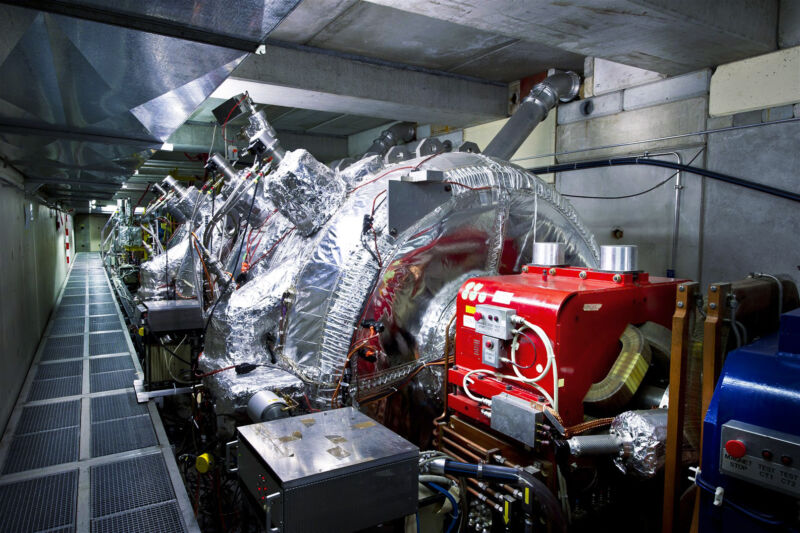Absolutely bonkers experiment measures antiproton orbiting helium ion

Enlarge / The hardware that slows down antiprotons so they can be used in these sorts of experiments. (credit: CERN)
In Wednesday's issue of Nature, a new paper describes a potentially useful way of measuring the interactions between normal matter and exotic particles, like antiprotons and unstable items like kaons or elements containing a strange quark. The work is likely to be useful, as we still don't understand the asymmetry that has allowed matter to be the dominant form in our Universe.
But the study is probably most notable for the surprising way that it collected measurements. A small research team managed to put an antiproton in orbit around the nucleus of a helium atom that was part of some liquid helium chilled down to where it acted as a superfluid. The researchers then measured the light emitted by the antiproton's orbital transitions.
Why would anyone want to do this?There are many reasons you'd want to get precise measurements of this sort of thing. For one, the measurements will be sensitive to the properties of antimatter and strange quarks, which are short-lived and are often created in environments that make precision measurements challenging. In addition, this system involves interactions between antimatter and regular matter, which can be difficult to capture due to their violent ends. Finally, the specific interactions here-between an atomic nucleus and an object in the orbitals that surround it-are sensitive to properties that are fundamental to the Universe.
Read 12 remaining paragraphs | Comments